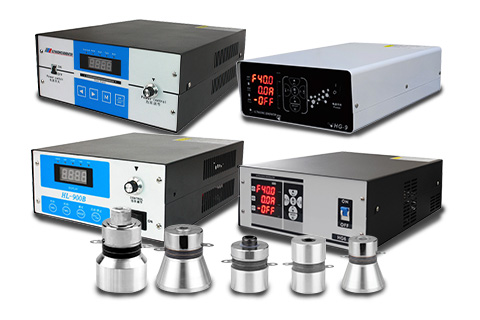Best Ultrasonic Cleaning Machines for PCB and Electronics [2025 Guide]
Keeping printed circuit boards (PCBs) clean is critical in modern electronics manufacturing, repair, and prototyping. Even microscopic contaminants can cause corrosion, short circuits, or complete failure. While manual cleaning methods like brushing and spraying exist, they’re often inconsistent, risky, and time-consuming.
That’s why engineers, technicians, and manufacturers are turning to ultrasonic cleaning. In this 2025 guide, you’ll discover the best ultrasonic cleaning machines for PCBs and electronics—along with buying tips, usage best practices, and expert insights. By the end, you’ll know exactly which machine fits your needs.
🔍 Top 5 Ultrasonic Cleaners for PCB and Electronics [Quick Comparison]
| Model Reference | Tank Size | Frequency | Best For | Highlight Feature |
|---|---|---|---|---|
| Model A | 10L | 40kHz | Electronics workshops | Digital control + Degas + Adjustable power |
| Model B | 6L | 40/68kHz | Labs & precision tasks | Dual-frequency, auto-degas, compact form |
| Model C | 20L | 40kHz | Industrial production | Large tank + heating + high power |
| Model D | 6L | 40kHz | Hobbyists, budget users | Entry-level price, durable frame |
| Model E | 5.7L | 42kHz | Medical/electronic labs | Precise timing, stable performance |
🧼 Model A — Workshop Essential
Perfect for mid-size electronics environments, this reference model offers a robust stainless steel build, degas function, temperature control, and digital timer. The 40kHz frequency ensures thorough yet safe cleaning for delicate PCBs.
🔧 Model B — Lab-Grade Precision
Ideal for R&D and laboratory applications, its dual-frequency design allows precision cleaning with either 40kHz or a gentler 68kHz. The automatic degas function and compact size make it a favorite in high-precision environments.
🏭 Model C — Industrial Capacity
With a generous 20L tank and heating control, this large-capacity unit serves high-throughput users cleaning large batches of boards. Designed for reliability and consistent performance in production settings.
💸 Model D — Budget-Friendly
A practical entry point with dependable results. While it lacks premium features, its 6L tank and 40kHz frequency suit hobbyists and smaller repair shops.
🧪 Model E — Precision Lab Cleaner
Reliable and consistent, this mid-sized model provides excellent results with 42kHz frequency and advanced timing control—ideal for delicate applications or medical-grade electronics.
💡 Why Ultrasonic Cleaning Is Ideal for PCBs
Ultrasonic cleaning uses high-frequency sound waves to create microscopic cavitation bubbles in a liquid solution. These bubbles implode on surfaces, dislodging contaminants like flux, oil, dust, and solder paste.
Benefits for PCBs:
Safe for components: No scrubbing or mechanical abrasion.
Deep cleaning: Reaches under components, inside vias and tight crevices.
Fast & efficient: Cleans multiple boards simultaneously in minutes.
Environmentally friendly: Uses water-based solutions with minimal chemical additives.
Compared to brushing or manual alcohol cleaning, ultrasonic methods are more consistent, scalable, and less likely to cause damage.
✅ How to Choose the Right Ultrasonic Cleaner for Electronics
1. Frequency
40kHz: Standard for PCB and most electronics.
68kHz: Gentler for precision tasks like MEMS, sensors, and thin SMDs.
Dual-frequency: More flexible, especially for mixed component assemblies.
2. Tank Size
Match the largest board you clean regularly.
Don’t overcrowd the tank—it reduces cavitation.
3. Degas Function
Removes trapped air from the solution to improve cleaning power—important when using fresh fluids or high-purity cleaning agents.
4. Power Output
Look for machines with adjustable power.
Too much wattage can damage components; too little won’t clean thoroughly.
5. Heating and Timer Controls
Heat (~40–60°C) helps remove flux and stubborn grime.
Digital timers improve repeatability and safety.
6. Build Quality
Stainless steel tanks are essential.
Prefer industrial-grade circuitry and insulation.
🧼 How to Clean a PCB with an Ultrasonic Cleaner (Step-by-Step)
Step 1: Choose a PCB-Safe Solution
Use a deionized water base with a mild electronics-safe detergent. Avoid alcohol-heavy mixes unless verified non-conductive.
Step 2: Set Parameters
Temperature: 40–60°C (depending on flux/oil type)
Time: 3–5 minutes per cycle
Step 3: Load PCB Properly
Use baskets to suspend boards.
Keep components upright and separated.
Step 4: Post-Clean Rinse
Rinse with fresh deionized water to remove detergent traces.
Step 5: Drying
Use compressed air to blow dry.
Or bake at low temperature (e.g., 60°C) for 10–15 minutes.
Step 6: Inspect and Test
Check visually for residues. Verify functionality if the board is mission-critical.
❓ Frequently Asked Questions (FAQs)
Will ultrasonic cleaning damage electronics?
Not if you use 40kHz+ and avoid overexposure. Ensure your components are sealed.
Can I use tap water?
No. Tap water can leave conductive mineral residues. Always use deionized or distilled water.
Should I remove components before cleaning?
No need for most surface-mount and through-hole components. Avoid open buzzers, microphones, and unsealed relays.
How often do I change the cleaning fluid?
For best results, change it daily or when visibly dirty.
What about conformal-coated PCBs?
Ultrasonic waves can’t penetrate coatings—clean before applying conformal coating.
🏢 Use Cases and Real-World Results
🔌 Electronics Assembly Shops
Batch clean boards before conformal coating.
Eliminate flux and soldering residues.
📱 Smartphone Repair Centers
Salvage water-damaged devices.
Restore oxidized and shorted logic boards.
🧪 Research Labs
Clean sensitive test prototypes.
Ensure signal integrity in precision circuits.
“We cut down rework by 30% after switching to ultrasonic cleaning.” — QA Manager, Electronics Facility
📦 Conclusion & Next Steps
Ultrasonic cleaning is no longer just a luxury for high-end labs. In 2025, it’s a must-have for anyone working with PCBs—from small shops to large-scale production lines.
Choosing the right machine ensures your boards are safe, clean, and fully functional. Whether you’re managing an electronics repair center, running a production line, or prototyping for innovation, there’s a cleaner designed to match your exact requirements.
Ready to optimize your cleaning process?
👉 Contact us now to get a personalized recommendation or request a custom quote.
Or download our full PDF buying guide for 2025 below.
